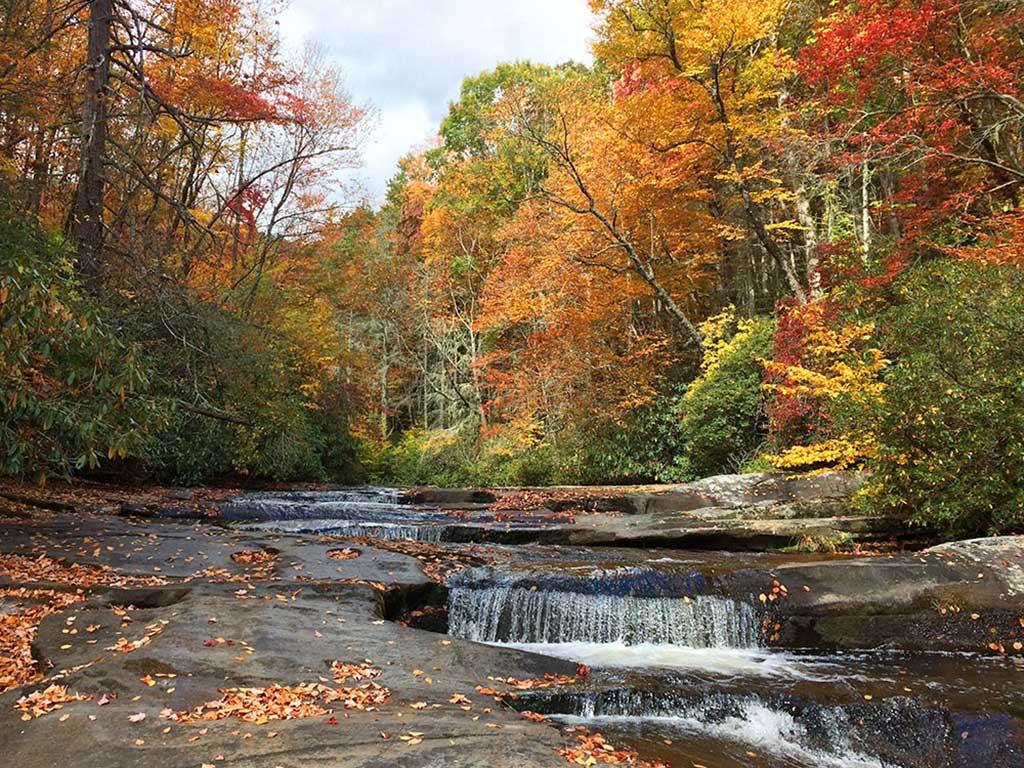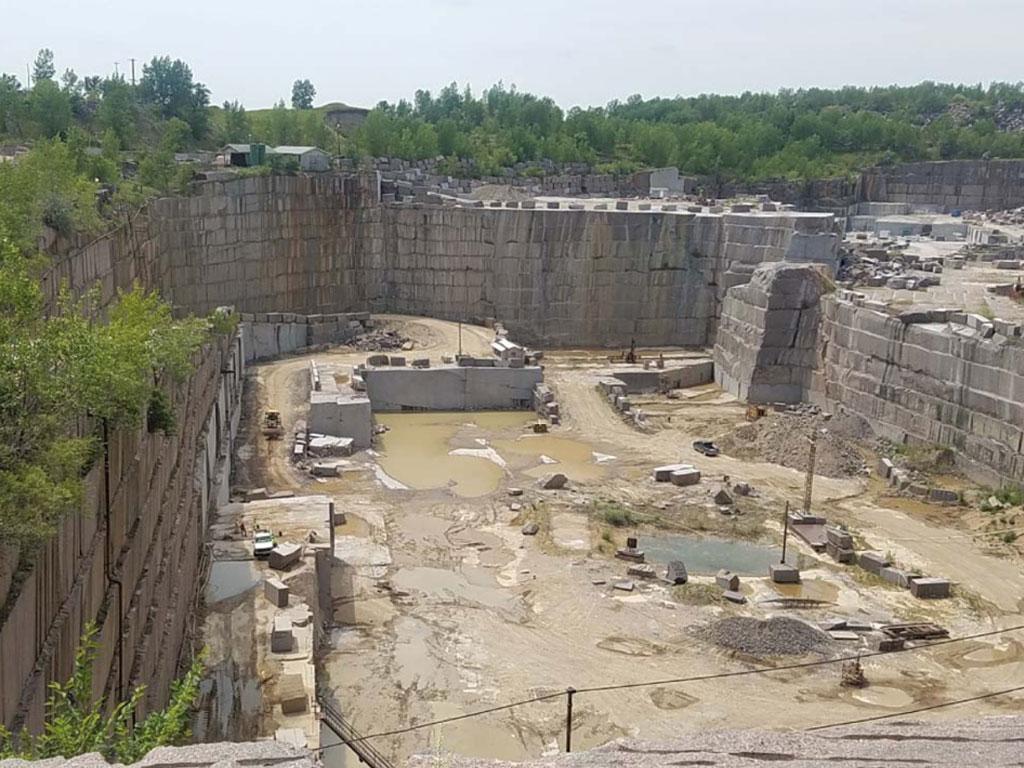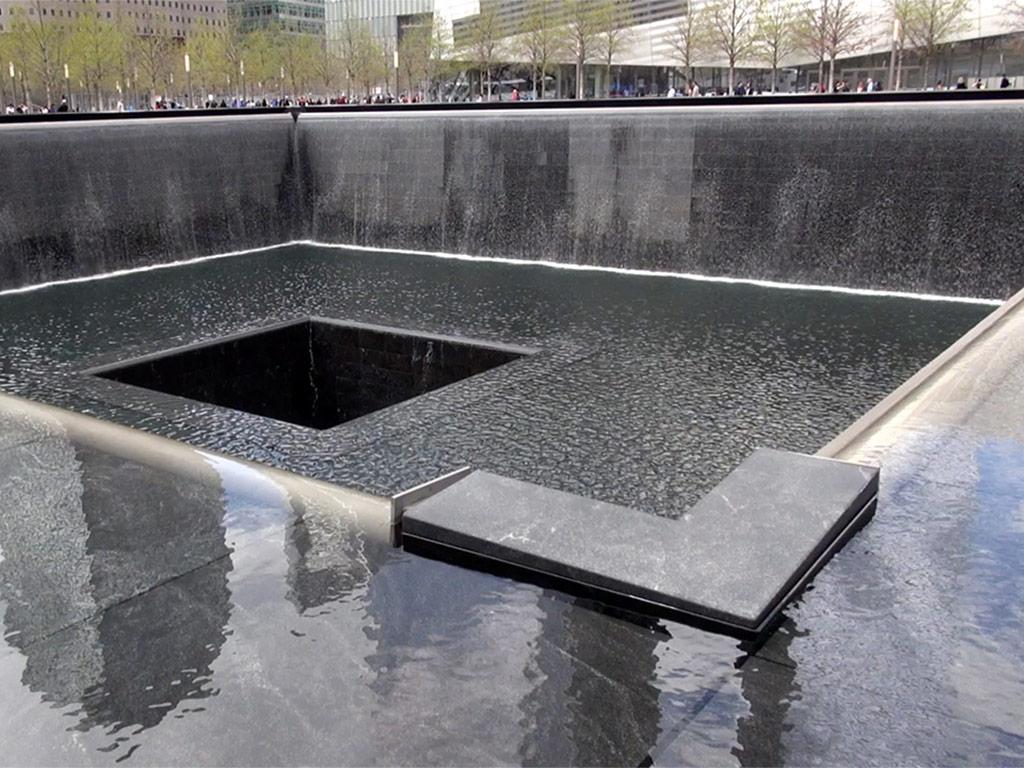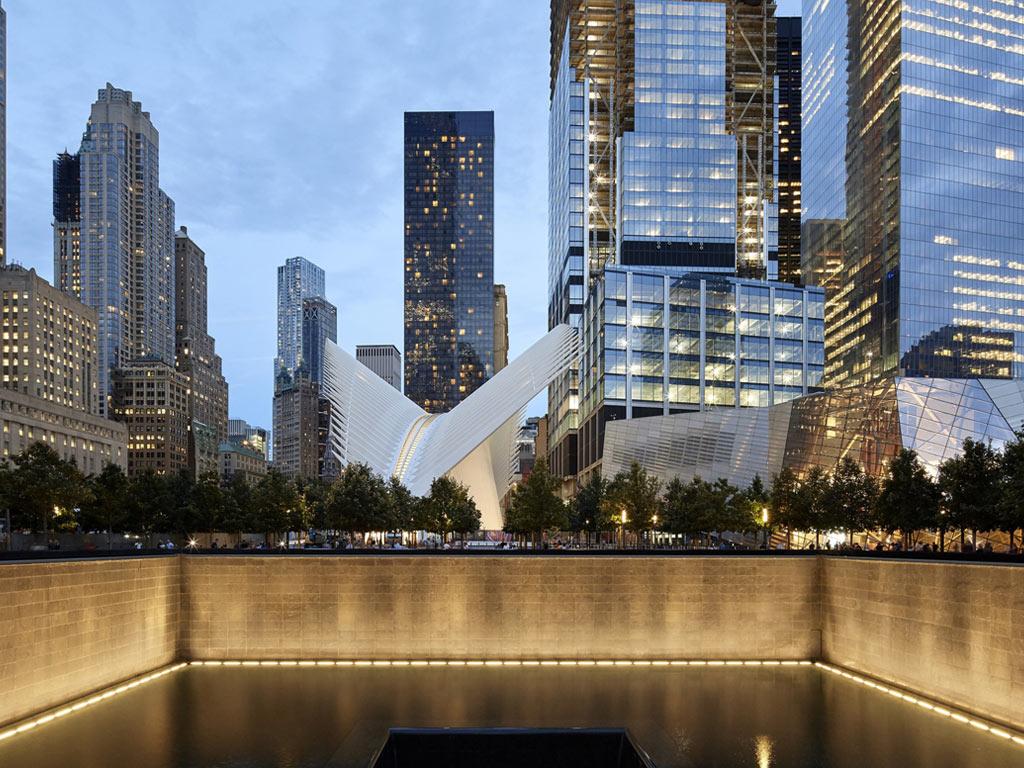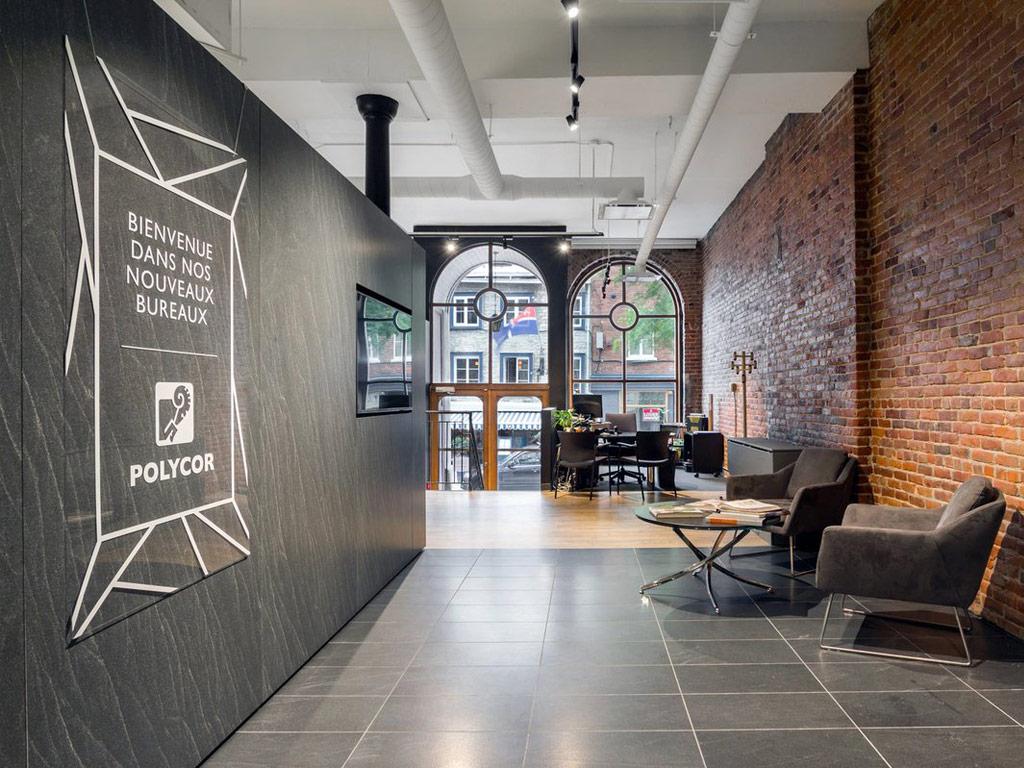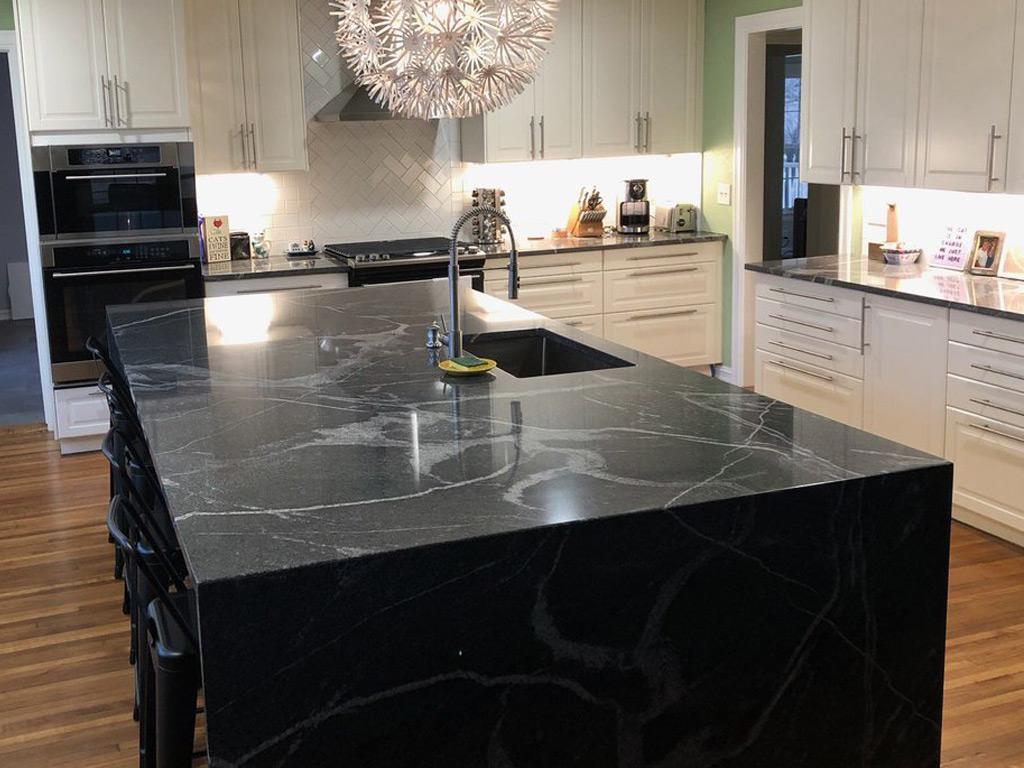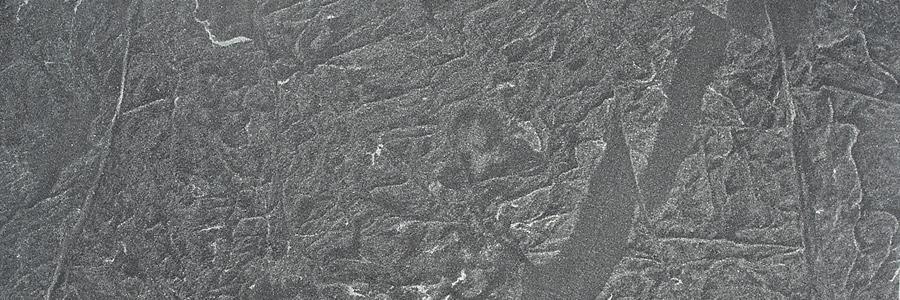
While wandering through the forests and valleys of Virginia, in the Blue Ridge Mountains, Pocahontas and John Rolfe surely stood in front of the foothills of dark rocks.
At that time, they probably had no idea that a few hundred years later, these rocks would have turned into quarries of Virginia Black, which is also called Virginia Mist or American Black.
Although the name Virginia and the American continent remind us rather of the South with cotton plantations, of English colonies, of the Civil War and of Scarlett O’Hara from ‘Gone with the wind’, we are obviously talking about granite.
Structure and physical properties of the granite Virginia Black
Virginia Black is a homogeneous granite with medium-sized grains. All in all, the colour of this granite appears dark grey with a tendency to black, but it has a soft shade that is interrupted and highlighted by light and white dots, as well as millimetre-sized green-brown and opaque elements.
The dots appear bundled or cloudy, donning a certain atmosphere to the Virginia Black slabs, you may think of a starry sky on a moonless night.
Differences between gabbro and granite
During a complex geological process, the structure of Virginia Black has been formed after the magma had solidified.
From a petrographic perspective, Virginia Black is not a granite, but basically a gabbro like Nero Zimbabwe and Nero Africa. Gabbro has less silicon dioxide, about 45 - 52%, and is therefore ranked amongst the basic rocks. In contrast, the structure of granite contains at least 63% of silicon dioxide and belongs accordingly to acid rocks.
That’s why a gabbro like Virginia Black is a harder and more resilient material.
Ground Zero Memorial: Virginia Black in architecture
Virginia Black is a very popular granite in the USA, important public buildings are frequently built with this material.
The most famous building is certainly the Ground Zero Memorial. This memorial was inaugurated in 2011, on September 11, exactly ten years after the attack, to commemorate all the victims as well as the destruction of the Twin Towers.
Two large square pools, made of granite, form the heart of this memorial; they are four metres deep and situated where the Twin Towers once stood.
The water runs along the four walls of each pool into a collecting basin, which has a square opening in the centre. The 2752 names of the victims of the terror attack are engraved on bronze plates along the pool borders.
The memorial is located on the Memorial Plaza, a granite-paved area, where hundreds of white oaks have been planted.
Thanks to its grace and elegance and because of the memorial‘s depth, the black granite Virginia Black has been a very good choice for Ground Zero Memorial.
Use of the granite Virginia Black
Virginia Black has a dark and deep shade; its colour palette ranges from deep black to different shades of grey to green or blue.
The physical properties of the granite Virginia Black include remarkable compressive strength and exceptional durability. Even in extreme environmental conditions, this natural stone stands out for its physical stability, making it ideal for flooring, cladding, and outdoor applications. Thanks to its resistance to atmospheric agents and extreme temperatures, it is often used in architectural and landscaping projects.
Virginia Black shows that a gabbro is a very hard and resistant material, particularly suitable for outer areas.
As Ground Zero Memorial testifies, this granite has good frost resistance and low water absorption (0,2%).
Thanks to its beauty, this granite is often used for interiors, both in commercial and private buildings.
Large areas can be paved with Virginia Black, due to its dark colour and abrasion resistance. In combination with other light materials, Virginia Black highlights smaller areas. Elegant kitchen or vanity tops can be made of Virginia Black, as well as fireplaces or tabletops.
The natural shine of Virginia Black adds elegance and luxury to the premises where it is used. Honed or polished surfaces highlight the texture and details of this natural stone, creating pleasant tactile and visual sensations. Its crystalline structure contributes to the refraction of light and gives the stone a natural shimmer with remarkable aesthetic effects.
In our opinion, a polished surface is the best finishing, as it emphasises the chromatic and aesthetic properties of this natural stone.
Regarding the processing, we think that a polished surface is the best finishing, as it emphasises the chromatic and aesthetic properties of this natural stone.
This mainly applies to interior decoration, but sometimes a satined surface can be more effective. In outdoor areas, however, different variations of flamed and brushed surfaces are recommended.
All in all, this granite is usable in many ways and brings a piece of American history to your home.
See also Virginia Black granite in our material catalogue.

